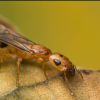Hello, This is my first question here.
I've been collecting various ant specimens, but I recently decided to start keeping Myrmecia. This will be my first time actually keeping ants, so I've been doing a lot of preparation.
I've noticed that many ant keepers on YouTube use a ytong nest for Myrmecia. I assume it's because ytong retains humidity well and allows for good airflow. But I’ve also heard some people say that its only real advantage is that it’s cheap. Additionally, it's hard to get a ytong nest in my country.
Acrylic nests can be risky, as formic acid can poison the ants. It also feels too artificial, and its surface might be uncomfortable for the ants.
So what about a gypsum nest as an alternative to ytong? Is it the only real option for Myrmecia?
I know there are many ways to control temperature and humidity properly, but my main concern is mold and mites. I've read that gypsum doesn’t handle those issues as well as ytong, and that worries me.
Any advice or experience would be greatly appreciated.





















